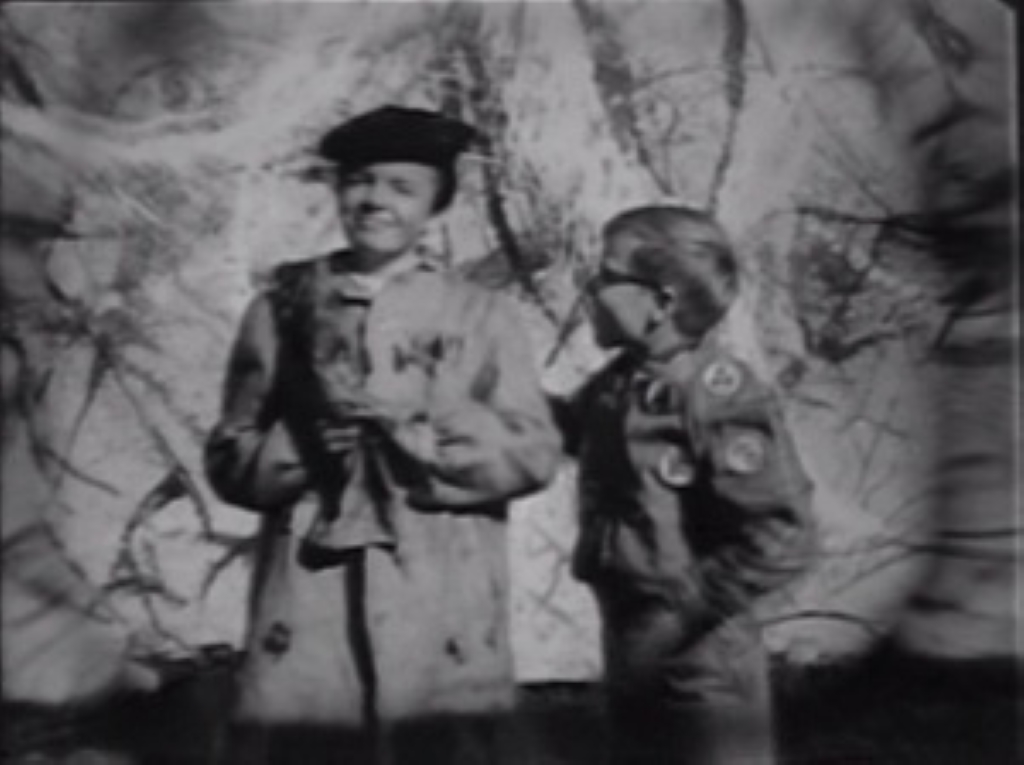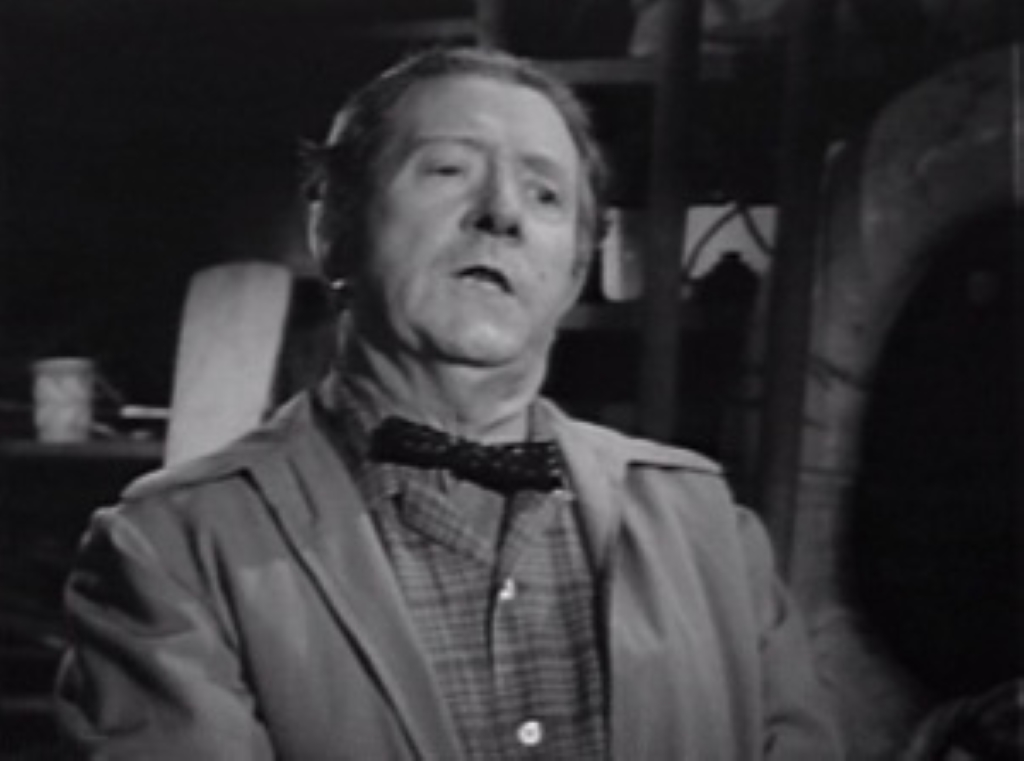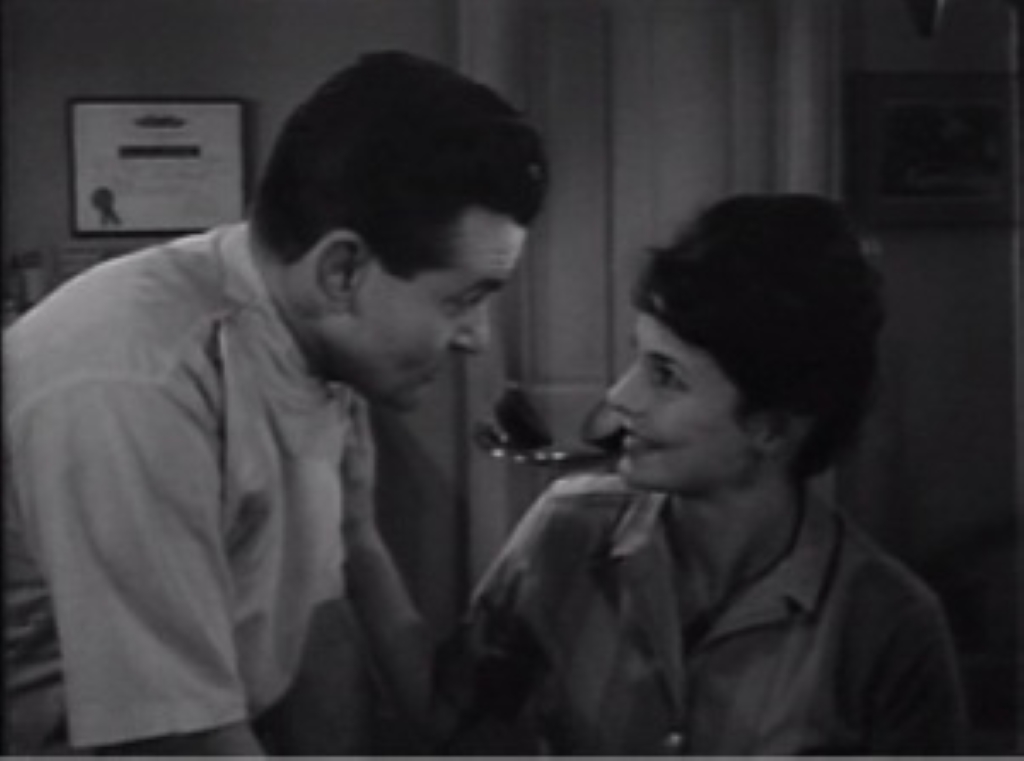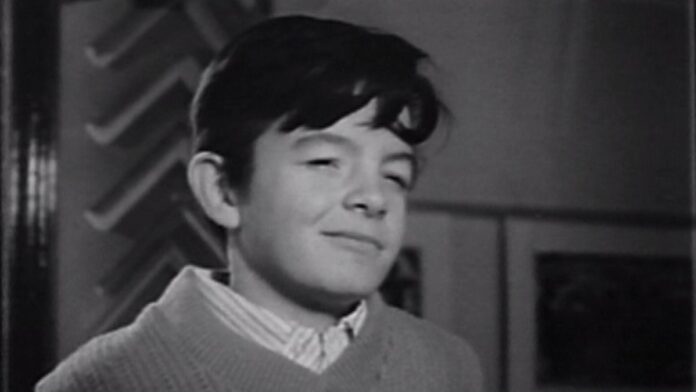Throughout the past week, I’ve been gradually exploring the diverse content within Shout! Factory’s five-DVD compilation titled “The Incredible Mel Brooks,” which serves as a retrospective encompassing his entire career, ranging from hits to misses that average out to be quite impressive.
This collection includes an abundance of excellent material covering Brooks’s early comedic films, his later less humorous works, and his comedy records as the 2000-Year-Old Man.
However, at This Was Television, our primary focus lies on the third word in our name.
So, today, I intend to delve into a little-known fragment of Brooks’s television career: the unsuccessful 1963 sitcom pilot titled “Inside Danny Baker.”
(*The pilot was directed by Arthur Hiller, who would later establish a distinguished career of his own, helming hits such as Love Story, Silver Streak, and The In-Laws.)
The titular character, portrayed by Roger Mobley, known for his work with Disney, is a laid-back 12-year-old.
He has a father who happens to be a dentist, a bespectacled companion named Eric, and an ardent desire to acquire a fishing boat priced at $35.
To raise funds for this coveted boat, the boys decide to transform Danny’s dad’s ping-pong table into a piece of contemporary art, which they aptly name “Harry.”
However, when their artistic endeavor fails to find a buyer, they ultimately (SPOILER ALERT) trade it for the desired boat.
The show’s title implies a gimmick that would offer a glimpse into the protagonist’s mind, but it takes a full 18 minutes of the pilot before that concept comes into play.
During this segment, we witness an extended dream sequence reminiscent of A Christmas Story, where Danny envisions himself as a renowned artist completing his final painting.
Surrounded by admirers, his parents express regret for doubting his decision to paint the ping-pong table, and even Yankees star Whitey Ford approaches him for an autograph.
Presumably, each episode would have featured a similar fantasy moment.

Apart from this fantasy sequence, what stands out about Inside Danny Baker is how little it reflects Mel Brooks’s signature style.
The Baker family exudes a decidedly WASPish vibe, lacking any trace of the Jewish humor that has defined Brooks’s career.
While the absence of clear ethnic identity on early 1960s television is understandable, it doesn’t explain the overall generic nature of the show’s comedy.
Brooks’s distinctive wordplay and slapstick humor are conspicuously absent.
The only joke that evoked a sense of “MEL BROOKS!” for me occurred in the fantasy sequence when Eric persuades Danny to take a lunch break, pleading, “Even Kirk Douglas stopped for lunch!”—a nod to Douglas’s role as Van Gogh in Lust for Life.
Everything else feels surprisingly subdued.
In fact, the show seems like an attempt to blend two popular shows from the era—Leave It to Beaver and The Dick Van Dyke Show.
The pilot’s storyline could easily fit into the later seasons of Beaver, and Roger Mobley exhibits the same natural talent for delivering kid-friendly dialogue as Jerry Mathers.
Eric even bears a resemblance to Beaver’s sidekick, Whitey.
The most Beaver-esque moments involve Danny, Eric, and the boat’s owner, Mr. Johannsen (played by Frank McHugh*).
Early on, Johannsen imparts valuable life lessons to the boys, teaching them the art of negotiation over the boat’s price.
This scenario mirrors the numerous scenes in which various adults guide Beaver through the intricacies of societal norms.
Similar to Beaver, these interactions never feel condescending; Mr. Johannsen simply comes across as a wise mentor genuinely interested in helping the boys.

(*McHugh, a frequent sidekick to James Cagney in the 1930s, deserves special recognition because his performance in this pilot is truly delightful to watch.
He adds numerous charming nuances and manages to turn seemingly unremarkable lines like “Hi fellas. I’m embarrassed” into some of the episode’s funniest moments.
However, it’s worth noting that it might not be a good sign when the most outstanding performance in the show comes from a special guest star.)
But Danny’s father, Ted (Robert Gerringer) is much grumpier than Ward Cleaver, and it’s in his scenes that the show starts to resemble The Dick Van Dyke Show (created, of course, by Brooks’s frequent collaborator Carl Reiner).
Van Dyke’s Rob Petrie wasn’t excessively irritable, but he often appeared slightly annoyed by the responsibilities of fatherhood.
His interactions with his son Richie frequently had a sharper edge than those on Beaver.
In this episode, there’s a moment where Ted, attempting to impart the value of money, struggles to come up with a fatherly cliché he hasn’t used before.
Danny keeps shooting them down, reminding him of the last time he tried them.
It’s easy to envision Rob and Richie having a similar exchange, although Larry Matthews as Richie would likely have sported a much more smirky demeanor.
The Dick Van Dyke similarities persist in the scenes between Ted and his wife Gloria (Joan Hotchkis, displaying the same wry, bemused skill she later put to use as Oscar’s girlfriend Nancy on many episodes of The Odd Couple).
The two briefly share a kiss in Ted’s dental office and engage in a humorous discussion about 1) whether people driving by might see a dentist kissing his patient and 2) if that would boost business.
It’s not the most passionate scene ever filmed, but it resembles the kind of playful conversation a real married couple might have.

The two exhibit genuine chemistry, and even though they probably wouldn’t have reached the level of Dick Van Dyke and Mary Tyler Moore, it’s conceivable that they could have developed into a pairing at least on par with Dick York and Elizabeth Montgomery.
One final similarity: the theme song (credited to Charles Strouse and Lee Adams, who had just collaborated with Brooks on the Broadway musical All American, although the absence of lyrics makes me question Adams’s involvement) bears a striking resemblance to the Dick Van Dyke theme.
It’s clear why Inside Danny Baker wasn’t picked up. It’s not a terrible show, but it doesn’t offer much that wasn’t done better in other shows (except maybe the fantasy gimmick, but that’s likely the least interesting aspect here).
Furthermore, it didn’t provide its creator with a platform for the type of comedy he adores. In pieces like this, it’s tempting to say something along the lines of “This offers us a glimpse of the Mel Brooks that might have been,” but it really doesn’t.
Instead, it provides a glimpse of a generic, working-class Mel Brooks who would have been unhappy, a Mel Brooks who would have spent the 80s writing scripts for different Strokes or The Facts of Life.

Here are some of the reasons why Inside Dann
That’s inconceivable, of course, because Brooks poured so much of himself into everything else he ever did.
Just two years later, he co-created Get Smart with Buck Henry, a show that bears all the hallmarks of Mel Brooks and Buck Henry’s humor.
This makes Inside Danny Baker an intriguing anomaly – a delightful peek into the world of failed TV pilots in 1963 – but it provides little insight into Mel Brooks, except that, for reasons known only to him, he was open to trying his hand at creating a family-oriented comedy.
It’s a nice place to visit, but it’s evident that he didn’t want to make a permanent home there.


